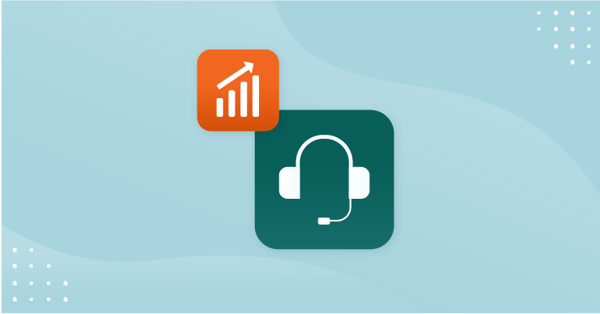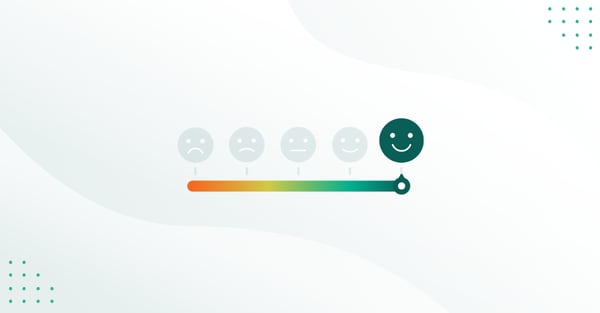When customers leave, growth slows. It’s that simple.
Customer churn doesn’t just impact revenue - it undermines everything you’ve invested in building trust, delivering value, and supporting long-term relationships. Yet despite the cost, most businesses aren’t equipped to stop it.
In fact, more than two-thirds of companies have no clear strategy to prevent churn - even though studies show it’s a lot cheaper to retain a customer than acquire a new one.
So, what’s the opportunity?
With the right tools and habits in place, churn becomes a signal - not just a loss. And every point of friction becomes a chance to reinforce value, re-engage at-risk customers, and increase loyalty over time.
In this article, we’ll explore 12 practical strategies to help you reduce churn and retain more of the customers you’ve worked so hard to win - backed by data and used by leading B2B companies today.
What Is Customer Churn - and Why Does It Matter?
Customer churn is the percentage of customers who stop doing business with you over a given period of time. It’s one of the clearest indicators of whether your business is creating consistent value - or falling short.
And churn isn’t just a customer service problem. It’s a business growth problem.
Why? Two big reasons:
- It’s expensive. According to Forrester, acquiring a new customer can cost 5x more than retaining an existing one. Replacing lost revenue also takes time - and often erodes margins in the process. Globally, churn accounts for over $1.6 trillion in lost business every year. 2
- Retention drives long-term growth. One of the most cited studies from Harvard Business School shows that a 5% increase in retention can drive up to 95% more profit. And 65% of a company’s business typically comes from its current customers - not new ones.
So if growth is your goal, retention must be part of your strategy.
And that’s where churn prevention comes in. Let’s look at 12 ways you can reduce customer churn - starting today.
1. Analyze Why Churn Happens
The first step in reducing churn? Understand it.
You can’t fix what you don’t measure - and too many companies assume why customers leave without ever asking. That’s a missed opportunity.
To truly learn from churn, you need to hear it straight from the source.
Start by calling - not surveying.
A direct conversation not only shows that you care, it gives you immediate, unfiltered feedback on what went wrong. What didn’t meet expectations? Where was the friction? What could have changed the outcome?
Close to 70% of customers leave because they believe a company doesn’t care about them. Calling says you do - and it creates space for future re-engagement.
Of course, not every customer is reachable by phone. That’s where structured feedback via email, surveys, and post-cancellation forms can help fill the gaps.
But don’t stop at one channel. Monitor customer sentiment across:
- Email and support interactions
- Website behaviour and NPS responses
- Live chat transcripts and social media mentions
These signals - when captured in your CRM - create a churn radar. You’ll start to notice patterns, triggers, and recurring issues you can proactively address.
SuperOffice CRM helps you centralize all these touchpoints into one customer record, so churn doesn’t catch you off guard. Instead, it becomes a signal to act - before it’s too late.

2. Engage with Your Customers
Customer relationships aren’t won at the point of sale - they’re built in the weeks and months that follow.
To prevent churn, you need to stay present, helpful, and visible in your customers’ day-to-day experience. That means proactive engagement - not just reactive support.
This approach is known as relationship marketing: creating consistent, ongoing value that strengthens loyalty over time.
What does that look like in practice?
- Deliver useful content that reinforces how to get the most from your product - think how-to guides, onboarding videos, webinars, or success tips.
- Celebrate milestones or check in post-purchase with helpful nudges (e.g., “You’ve been with us for 90 days - want a quick success review?”).
- Share relevant updates - such as feature releases, upcoming maintenance, or industry insights - to keep your product top of mind.
According to Adobe/Marketo, email is the top B2B channel for engaging existing customers. But engagement works best when it’s timely, personalized, and tied to your customer’s specific lifecycle stage.
That’s where having a CRM makes all the difference.
With SuperOffice CRM, you can trigger personalized email campaigns based on behavior - like login frequency, support history, or time since last interaction. That means fewer blanket emails, and more touchpoints that feel relevant, helpful, and human.
And don’t forget to listen. Use surveys, social listening, and 1:1 feedback loops to close the engagement gap.
Engagement doesn’t just reduce churn - it builds advocacy, renewals, and upsell opportunities over time.
3. Educate the Customer
The more confident your customer feels using your product, the less likely they are to leave it.
Churn often stems from uncertainty: "Am I doing this right?" "Is this worth the cost?" "Am I even using all the features I'm paying for?" Education turns hesitation into momentum - and momentum leads to retention.
Onboarding is just the beginning.
Effective education doesn’t stop after the welcome email or product tour. It’s an ongoing effort to help your customers unlock more value, solve problems faster, and use your solution with greater ease.
What to provide:
- Interactive product demos and walkthroughs
- Live or on-demand webinars
- Video tutorials and quick-start guides
- Knowledge base articles and how-to content
- Office hours or Q&A sessions
According to Wyzowl, 68% of users say they’d stay more loyal to a business that invests in onboarding and education. It’s not just support - it’s customer enablement.
SuperOffice CRM gives your team a full view of customer onboarding status, support requests, and feature usage, so you can deliver the right education at the right time - automatically.
For example, if a customer hasn’t used a key feature after 30 days, trigger a guided tutorial or follow-up email.
And don’t just teach - track. Monitor which customers are engaging with content and where they’re dropping off. That insight can inform both your outreach strategy and your product roadmap.
Education builds confidence. Confidence builds loyalty. And loyal customers don’t churn.
4. Know Who’s At Risk - Before They Leave
Not all churn is a surprise. In fact, most customers show signs before they walk away.
The key is being able to recognize those signs - and act early enough to make a difference.
This is where predictive churn prevention becomes powerful. Instead of reacting after a cancellation, you proactively monitor for behaviour that signals risk. Things like:
- A drop in usage or logins
- Support tickets that go unresolved
- Late invoice payments
- Fewer responses to marketing communications
- Skipped check-ins or missed success milestones
According to McKinsey, companies using predictive analytics reduce churn by up to 15%. The earlier you spot disengagement, the more options you have to intervene.
SuperOffice CRM helps identify at-risk customers by tracking engagement trends across sales, service, and marketing. You can even set up alerts based on inactivity, overdue follow-ups, or negative support sentiment - so your team can reach out while there's still time to rebuild trust.

Some companies even assign “churn scores” based on customer behaviour, automating retention workflows for customers who meet the risk criteria.
When you know who’s slipping away, you don’t have to guess. You can reach out with value, support, and a clear reason to stay.
Want to know which of your customers are slipping away - before they churn?
Get a free walkthrough of how SuperOffice CRM flags at-risk accounts and helps you act early. Book your personalized demo now.
5. Define Your Most Valuable Customers
Not all churn is created equal. Losing one low-engagement user isn't the same as losing a high-value customer who's been with you for years.
To reduce churn in a way that drives sustainable growth, you need to identify which customers matter most - so you can prioritize retention where it has the greatest impact.
This is where customer segmentation and lifetime value analysis come in.
Start by asking:
- Who brings in the most revenue or margin?
- Who is most engaged with your product or service?
- Who has potential to expand or renew?
- Who influences others or advocates for your brand?
Segmenting your customer base by value, loyalty, or expansion potential allows you to direct your time and resources toward the relationships that truly drive your business forward.
Gartner found that just 20% of your customers account for 80% of your future revenue. You can’t afford to treat every customer the same.
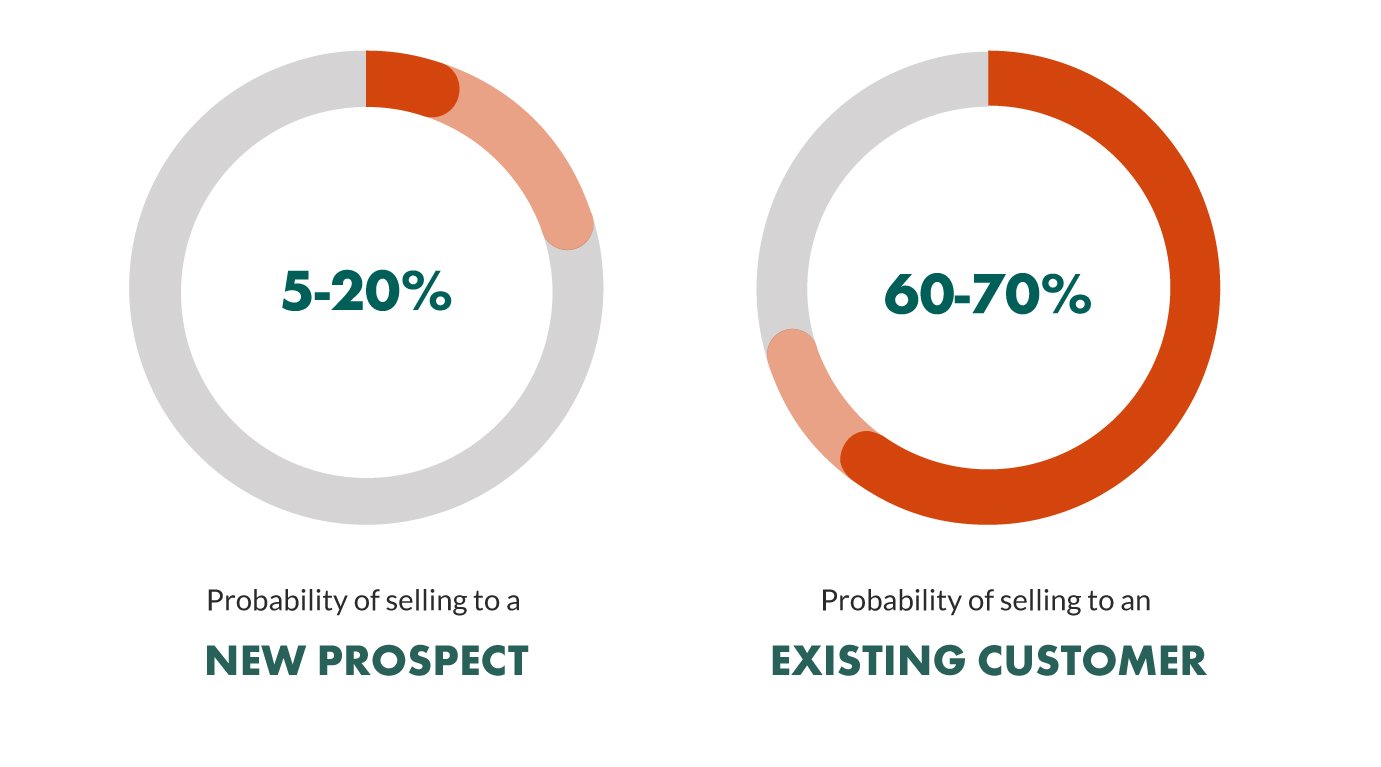
With SuperOffice CRM, you can track revenue by account, assign custom scoring models, and create dynamic customer segments - making it easy to focus on high-impact accounts for retention, success reviews, or proactive outreach.
Once you know who your most valuable customers are, you can:
- Offer priority support or exclusive content
- Monitor their satisfaction and health closely
- Involve them in feedback loops or beta testing
- Flag them for early renewal or upsell conversations
Retention is important - but retaining the right customers is what makes it profitable.
6. Offer Incentives (But Use Them Strategically)
When a customer is on the fence, a well-timed incentive can tip the balance.
Discounts, loyalty perks, and upgrade offers can be powerful tools to re-engage at-risk accounts - but only if they’re used intentionally. Because if you're not careful, incentives can eat into your margins or train customers to wait for better deals.
So how do you offer incentives without devaluing your brand?
Focus on relevance, not desperation.
Instead of blanket discounts, use incentives to:
- Reward loyalty (e.g., milestone-based bonuses or renewal perks)
- Encourage feature adoption (e.g., “Unlock X when you activate Y”)
- Reignite disengaged customers (e.g., time-limited upgrades for inactive users)
- Create shared wins (e.g., exclusive pricing for feedback, referrals, or case studies)
SuperOffice CRM lets you identify inactive or high-risk segments, then trigger targeted nurture campaigns, renewal reminders, or offers automatically - so you’re always adding value at the right time, without overextending your team.
Incentives should feel earned - not expected. The right offer, delivered to the right person at the right time, can turn a near-exit into a renewed commitment.
7. Target the Right Audience
Reducing churn doesn’t start at cancellation - it starts at acquisition.
If you’re consistently attracting customers who aren’t a good fit, no amount of engagement, education, or incentives will keep them around. That’s why long-term retention begins with targeting the right audience in the first place.
Ask yourself:
- Are you positioning your product around value - or price?
- Are your marketing campaigns aligned with what you actually deliver?
- Are you qualifying leads based on long-term fit, not just immediate interest?
Research from ProfitWell (now Paddle) shows that customers acquired through heavy discounting are 50% more likely to churn than full-price buyers. If you sell to the wrong people, they’ll leave for the right reasons.
That’s why your ICP (Ideal Customer Profile) matters.
Customers who:
- Align with your value proposition
- Have a clear need and use case
- See long-term potential in your solution
…are far more likely to stay, expand, and refer others.
SuperOffice CRM helps you track which segments convert, onboard, and retain best, so you can continually refine your outreach and double down on the right-fit customers.
Retention isn’t just a support or success issue - it’s a go-to-market issue. The better your targeting, the stronger your customer base will be from day one.
8. Give Better Service
Great products bring customers in. Great service keeps them.
When customers feel ignored, frustrated, or rushed, they don’t just churn quietly - they take their experience with them. And in today’s connected world, one poor interaction can ripple through review sites, social feeds, and buying committees.
If churn is a symptom, poor service is often the cause.
Here’s what “better service” really means:
- Fast, helpful responses when customers need them most
- Consistency across channels (email, chat, phone - wherever they reach you)
- Empathy and ownership from every person they talk to
- Proactive follow-up that shows you care about outcomes, not just tickets
And it’s not just about fixing issues - it’s about making customers feel heard.
Research shows that 85% of churn is due to poor service, not price or product. That’s a huge opportunity to differentiate.
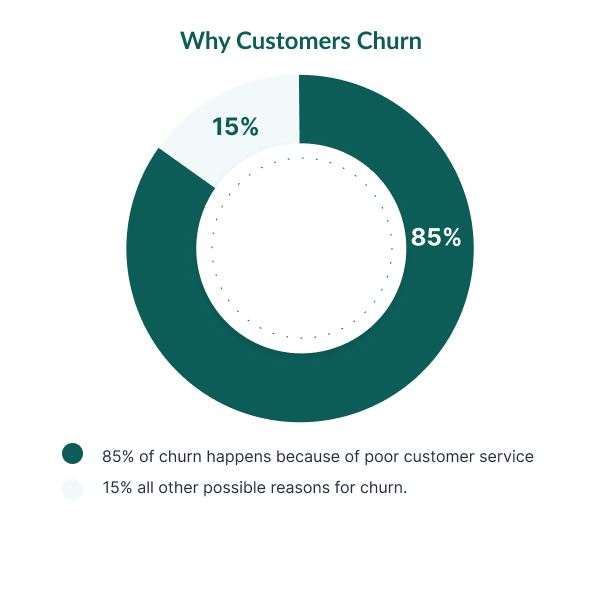
With SuperOffice CRM, your support team gets the full picture: recent tickets, purchase history, marketing touchpoints, even sales conversations. That context means faster answers, fewer handoffs, and service that actually feels personal.
If you want to reduce churn, don’t just improve service speed. Improve service quality, consistency, and empathy - because the experience is what people remember.
Better service starts with better tools. See how SuperOffice CRM helps your team deliver personal, timely, and consistent service - every time. Talk to a CRM expert today.
9. Pay Attention to Complaints
Most companies dread customer complaints. Smart companies see them as gold.
Every complaint is a signal - an opportunity to fix what’s broken, deepen trust, and turn frustration into loyalty. The real danger isn’t hearing complaints. It’s not hearing them at all.
According to Esteban Kolsky, only 1 in 26 unhappy customers actually complain. The rest simply leave. Worse, 91% of those who churn will never come back.
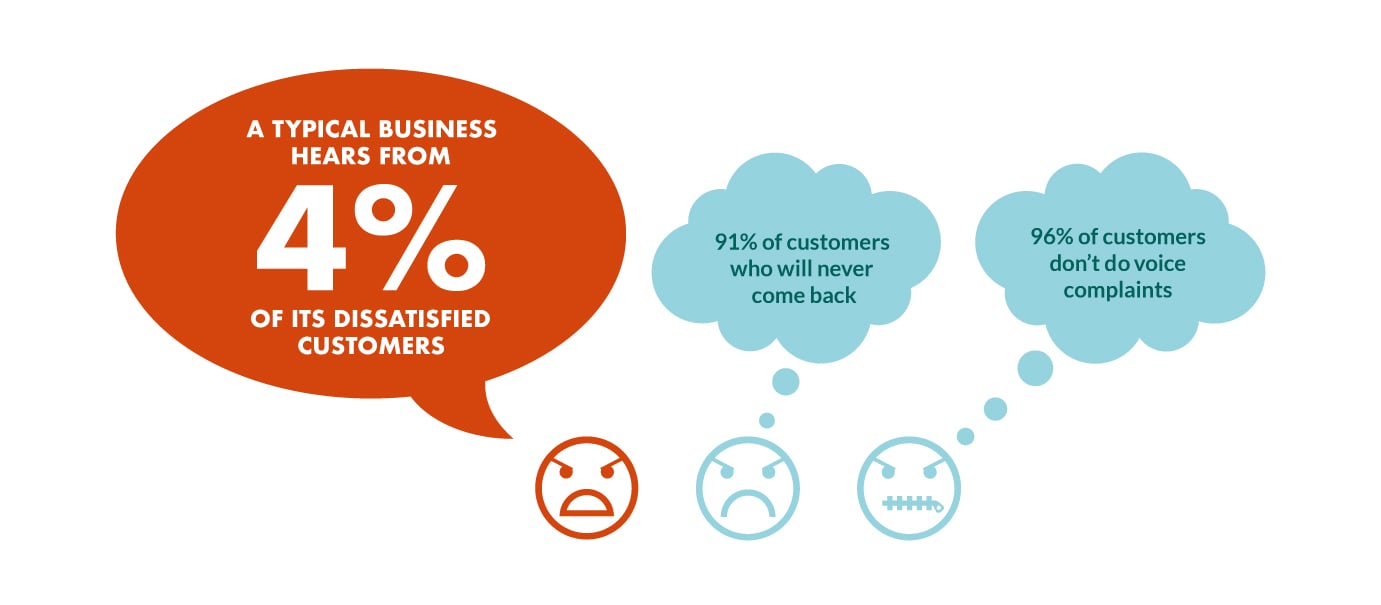
That’s why silence isn’t comfort - it’s a churn risk.
How to make complaints your advantage:
- Make it easy to speak up. Prominently feature feedback options in your product, website, and follow-up emails.
- Treat every complaint as a learning opportunity. What does this say about your process, product, or expectations?
- Close the loop. Show customers that their feedback was heard - and acted on.
With SuperOffice CRM, your support and account teams have a shared view of all complaints, feedback, and resolutions, making it easier to track patterns, prevent repetition, and follow up with empathy.
One complaint might seem small. But if 10 customers experience the same issue and only 1 speaks up, fixing it proactively could prevent 9 future churns.
Churn prevention starts by listening - and proving that you care enough to improve.
10. Make Your Best People Handle Cancellations
When a customer says they want to leave, it’s not just a goodbye - it’s a last chance.
Too often, businesses treat cancellation as a formality. They route it to junior reps, automate the response, or skip the conversation entirely. But this is when you need your sharpest, most empathetic people at the front of the line.
Why? Because churn conversations are still sales conversations - they just happen at the end of the journey, not the beginning.
Customers who feel heard and respected are more likely to stay - even if their issue isn’t fully resolved. Sometimes, all it takes is a real conversation.
What your best reps bring to the table:
- The ability to listen without getting defensive
- Context from past interactions, goals, and support history
- Creative problem-solving, paired with win-back offers
- Emotional intelligence and real ownership
With SuperOffice CRM, your reps have access to every touchpoint - sales notes, support tickets, onboarding history - so they can walk into a cancellation call fully prepared to re-engage with empathy and context.
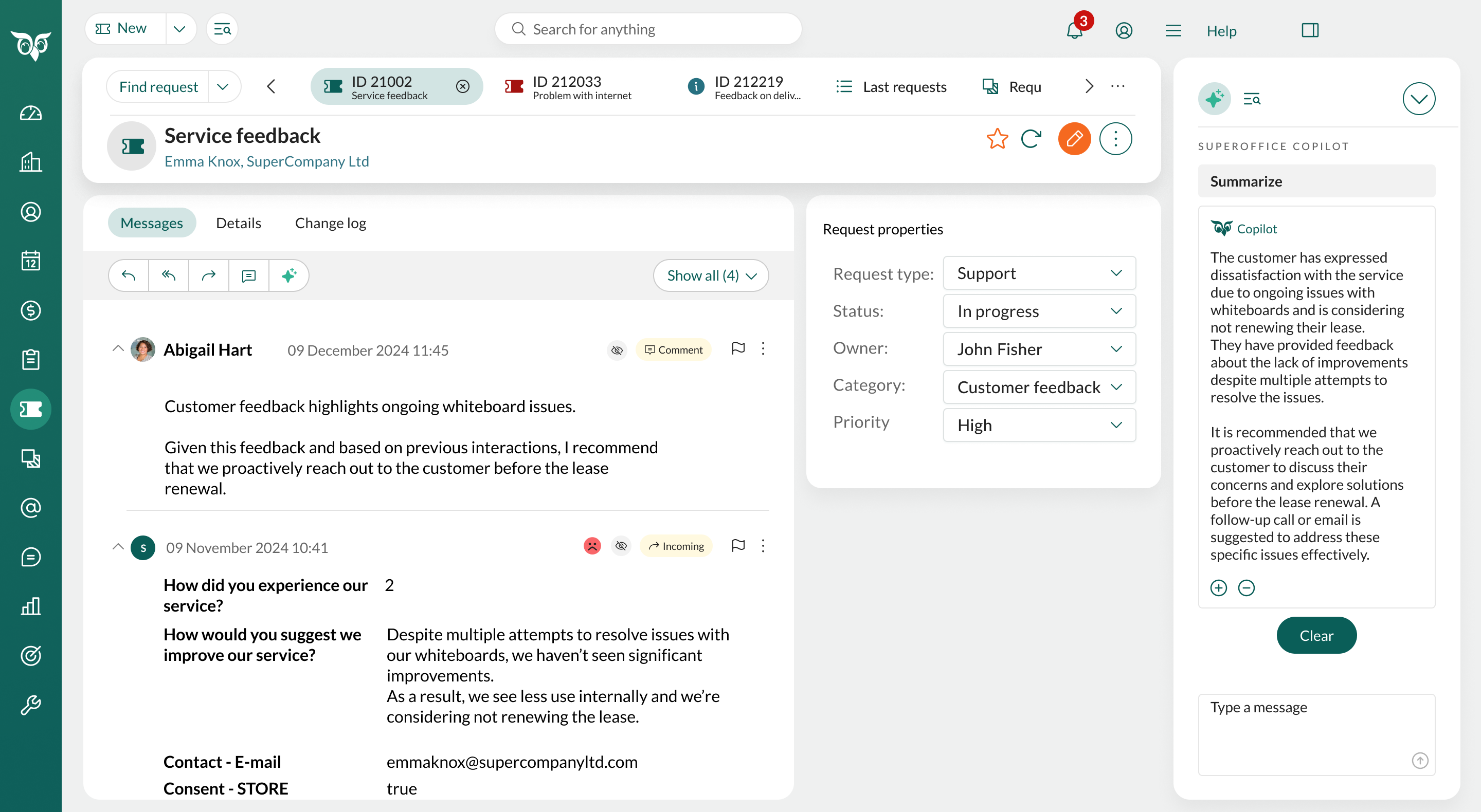
And even if the customer does walk away, you’ve left the door open for future business, referrals, or reactivation.
The bottom line? Don’t treat churn like admin. Treat it like your last - and best - chance to prove your value.
11. Flaunt Your Competitive Advantages
When customers consider leaving, it’s rarely a snap decision. It usually follows a period of doubt - when value feels unclear, alternatives look tempting, or your unique strengths simply aren’t top of mind.
That’s why retention isn’t just about fixing problems - it’s about reinforcing why you’re the best choice in the first place.
According to Bond, customers who see differentiated value are 2.6x more likely to remain loyal, even if a competitor offers a lower price.
If your customer doesn’t know what makes you better, they’re not going to stay out of loyalty - they’ll stay only as long as it’s convenient.
So, be proactive:
- Remind them what sets you apart. Whether it’s faster onboarding, better support, industry specialization, or results you’ve helped them achieve - make that value visible.
- Turn wins into proof. Share small successes, highlight adoption, or surface ROI data in regular account reviews.
- Don’t assume they remember. People forget. Repetition builds trust.
With SuperOffice CRM, you can track what matters most to each customer - goals, preferences, past outcomes - and use that data to personalize your value reminders through success calls, campaigns, or automated touchpoints.
Retention isn’t about being better in theory. It’s about helping your customers feel that difference, consistently - and clearly.
12. Offer Long-Term Contracts (When the Timing Is Right)
Want to reduce churn? Give customers a reason - and the confidence - to commit.
Long-term contracts aren’t just about locking in revenue. They’re about reinforcing value, reducing uncertainty, and strengthening your relationship over time. But the key is knowing when to offer them.
According to SaaS Capital, companies with longer average contract terms have 30–50% lower churn rates, largely because commitment correlates with confidence.
But you can’t rush it. Offering a long-term deal too early can backfire. The right time to extend the offer is after your customer has seen success and is ready to scale or deepen the partnership.
Use long-term contracts to:
- Create mutual value. Offer discounts or added features in exchange for a longer commitment.
- Support customer planning. Give them cost certainty and continuity for annual or multi-year budgets.
- Signal trust. You believe they’ll succeed with you for the long haul - and you’re invested in making that happen.
With SuperOffice CRM, you can track contract cycles, flag renewal opportunities, and trigger retention campaigns when customers hit key satisfaction or usage milestones - so timing always aligns with trust.
Remember, retention isn’t about pressure. It’s about helping the customer say, “This is working - and I want more of it.”
Quick Churn Self-Audit: Where Are Your Risks?
Before you dive into tactics, it’s worth asking: where is churn most likely happening in your business today?
Use this simple self-check to identify blind spots, then focus your energy where it will have the biggest impact.
Are you doing enough to prevent churn?
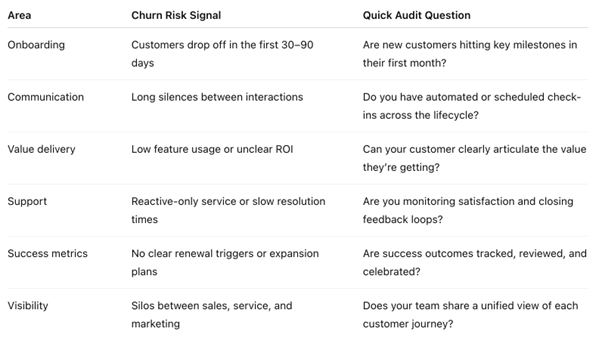
If you're answering “not really” or “I’m not sure” more than once, don’t worry - you’re not alone.
The good news: most churn problems are visibility problems. And that’s exactly where the right CRM makes all the difference.
Keep Customers by Staying Closer to Them
Churn doesn’t just happen - it builds over time, often quietly.
That’s why the best defense isn’t a last-ditch save offer. It’s a consistent, informed customer experience: one where your team knows what matters to each account, follows up at the right time, and delivers value before the customer ever has to ask.
The right CRM turns that from intention into execution.
With SuperOffice CRM, you can:
- See which accounts are slipping, and step in before it’s too late
- Centralize all touchpoints - from sales to service - in one place
- Trigger timely actions based on real customer behavior
- Turn feedback, usage, and engagement data into retention playbooks
Because keeping customers shouldn’t be reactive. It should be built into how your business operates every day.
Even a small increase in retention can make a massive difference.
So if you’re ready to reduce churn, start by getting closer to your customers - and giving your teams the tools to support them better.
Ready to see how SuperOffice CRM helps you keep more of the customers you’ve worked so hard to win?
Stop churn before it starts. Schedule your free demo to see SuperOffice CRM in action - and learn how to turn churn signals into customer loyalty. Book my free demo.


